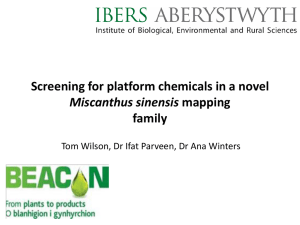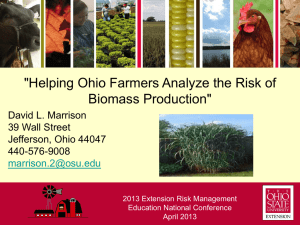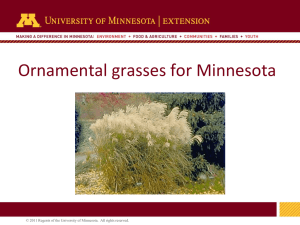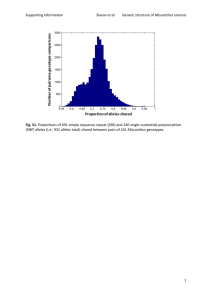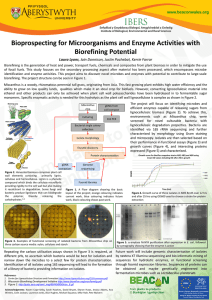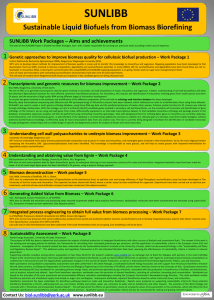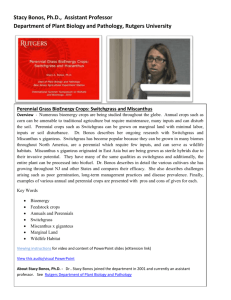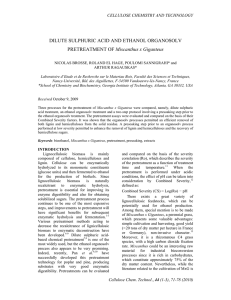APPLICATION SUMMARY
advertisement
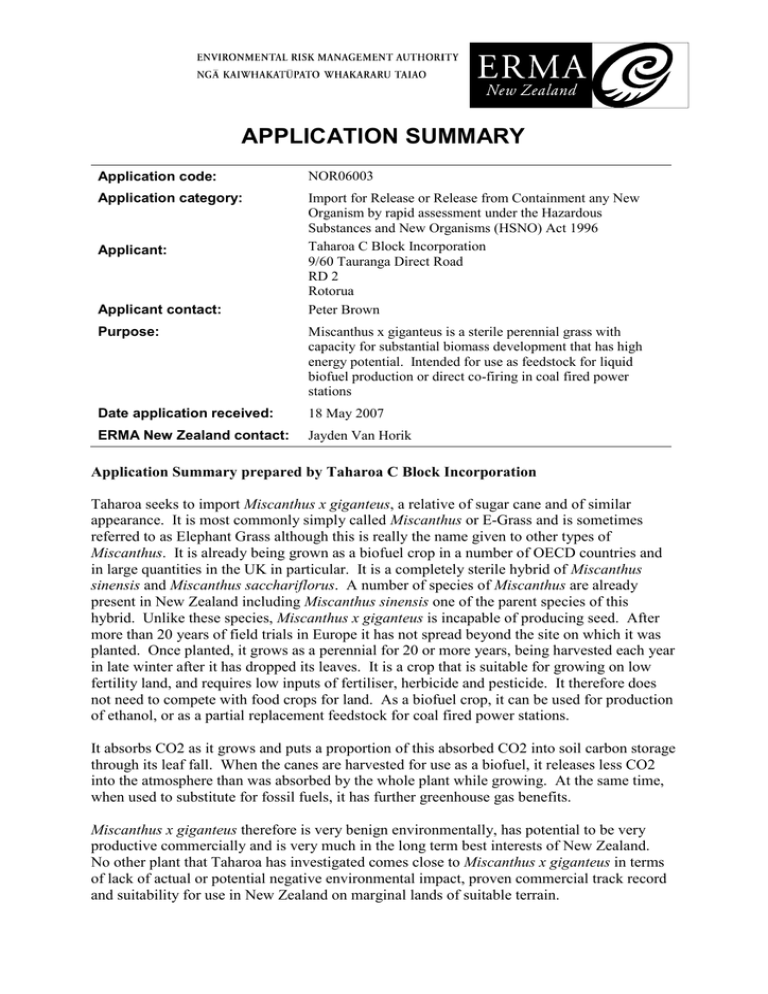
APPLICATION SUMMARY Application code: NOR06003 Application category: Import for Release or Release from Containment any New Organism by rapid assessment under the Hazardous Substances and New Organisms (HSNO) Act 1996 Taharoa C Block Incorporation 9/60 Tauranga Direct Road RD 2 Rotorua Peter Brown Applicant: Applicant contact: Purpose: Miscanthus x giganteus is a sterile perennial grass with capacity for substantial biomass development that has high energy potential. Intended for use as feedstock for liquid biofuel production or direct co-firing in coal fired power stations Date application received: 18 May 2007 ERMA New Zealand contact: Jayden Van Horik Application Summary prepared by Taharoa C Block Incorporation Taharoa seeks to import Miscanthus x giganteus, a relative of sugar cane and of similar appearance. It is most commonly simply called Miscanthus or E-Grass and is sometimes referred to as Elephant Grass although this is really the name given to other types of Miscanthus. It is already being grown as a biofuel crop in a number of OECD countries and in large quantities in the UK in particular. It is a completely sterile hybrid of Miscanthus sinensis and Miscanthus sacchariflorus. A number of species of Miscanthus are already present in New Zealand including Miscanthus sinensis one of the parent species of this hybrid. Unlike these species, Miscanthus x giganteus is incapable of producing seed. After more than 20 years of field trials in Europe it has not spread beyond the site on which it was planted. Once planted, it grows as a perennial for 20 or more years, being harvested each year in late winter after it has dropped its leaves. It is a crop that is suitable for growing on low fertility land, and requires low inputs of fertiliser, herbicide and pesticide. It therefore does not need to compete with food crops for land. As a biofuel crop, it can be used for production of ethanol, or as a partial replacement feedstock for coal fired power stations. It absorbs CO2 as it grows and puts a proportion of this absorbed CO2 into soil carbon storage through its leaf fall. When the canes are harvested for use as a biofuel, it releases less CO2 into the atmosphere than was absorbed by the whole plant while growing. At the same time, when used to substitute for fossil fuels, it has further greenhouse gas benefits. Miscanthus x giganteus therefore is very benign environmentally, has potential to be very productive commercially and is very much in the long term best interests of New Zealand. No other plant that Taharoa has investigated comes close to Miscanthus x giganteus in terms of lack of actual or potential negative environmental impact, proven commercial track record and suitability for use in New Zealand on marginal lands of suitable terrain.
